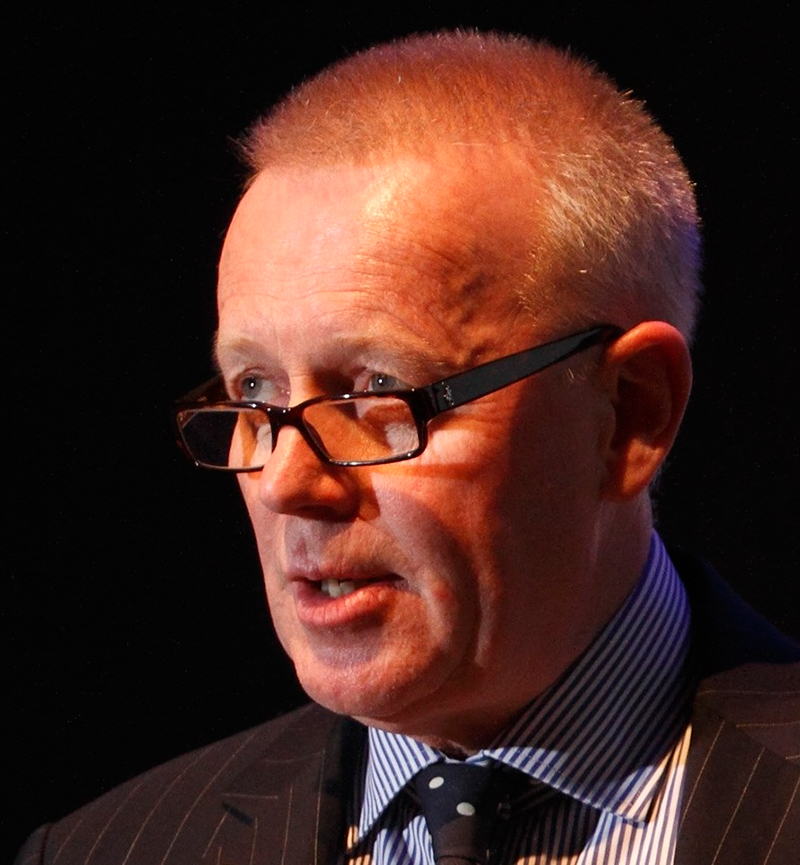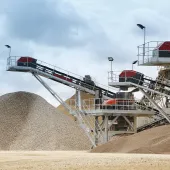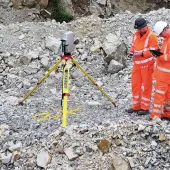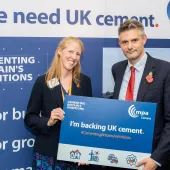A review of the first five years of the Mineral Products Association

First published in the July 2014 issue of Quarry Management as MPA Five Years On…
Unity plus Evidence plus Consensus equals Influence
by Nigel Jackson, chief executive, Mineral Products Association
It hardly seems possible that the Mineral Products Association (MPA) is already five years old. What started as a genuinely strategic idea from a number of very experienced industry leaders to ‘find a better way’ to organize the fragmented efforts of a complex and diverse industry into an aligned, unified and professional association has navigated successfully through as challenging a five years as there has ever been. With demand post 2007 reducing by more than 30% to levels not seen since the mid-1960s, it has been a monumental task not only to change the representational model for the industry, but to make it inclusive, sensitive, consensual and, above all, sectoral. Informed influence is the aim in these days of evidence-based politics, and whilst old-style ‘emotional advocacy’ may feel good in the moment, it is rarely effective.
Government, the devolved administrations, local government and their respective agencies are no longer static; they are continually restructuring, downsizing and evolving. Their resources are weakening and their understanding of sharp real-world issues is limited. Our interface with them is, therefore, critical, and it can often feel like an uncertain and moving target. Engineering the right ‘conversation’ with the right audience cannot be a random matter; it needs considered analysis and sound and professional deployment. MPs are increasingly professional career politicians generally biased towards the social sciences and the public sector and very short on ‘heavy side’ business experience. To enable sound policy formation in future we will have to work harder to explain what we do and why it matters.
Consequently, those who originally conceived the concept of the MPA deserve credit. They were practitioners who had decades of proven achievements in the industry and who tried to see the future. They saw the need to simplify and sharpen the interface with government and key stakeholders, to focus the thinking of the industry into an aligned organization which drew heavily from its base to enable one coherent strategy and supporting policies to be developed for the good of all.
Did it make sense for the aggregates, cement, concrete, asphalt, mortar, lime, dimension stone and silica sand industries to all be talking about common issues such as health and safety, carbon and energy, planning and permitting, biodiversity, technical standards, taxation and regulation without having joined-up thinking? How could we complain about others not being ‘joined up’ when we were not?
The merger of the former Quarry Products Association, British Cement Association and The Concrete Centre into the MPA in 2009 will, I hope, be judged in years to come as the seminal step forward in the evolution of the industry into a sector. A sector which in the MPA currently consists of 480 members, of which 470 are SMEs, and which brings together the vast majority, whether they be the large, the medium or the small, from across the UK and the full range of mineral products. The recent valued affiliations and the deepening and integrating of operational management with British Precast and the British Association for Reinforcement (BAR) to complement the existing affiliations with MPA Scotland, QPA Northern Ireland and the Refined Bitumen Association (RBA), add significant strength and diversity to the original merger model. The MPA has undoubtedly become the voice of the mineral products sector.
So how can the MPA be the ‘big boys club’ that some try to say it is? Self-evidently, it just can’t be and it isn’t.
Most trade associations are asymmetrically funded to some degree. But strength of funding and strength of argument are two different things. In my experience no-one has ever won an argument just because of who they work for. In the committee room the dominant force is the merit of the idea or the argument. In 99% of cases there is a solution that works for the vast majority; the challenge is finding it. That is why a strong, inclusive and responsive governance model is so important.
Governance
The MPA board is responsible for the strategic direction and overall fiduciary health of the association, although this is largely developed from the bottom up throughout the association through the annual business planning process. The chief executive and staff are empowered to manage the association operationally day to day and the CEO reports to the board. The companies currently on the board include the current and fourth chairman, Bill Brett (Brett Group), the four ‘majors’ and six ‘non-majors’, ie Allen Newport, Aggregate Industries, Breedon Aggregates, CEMEX, Hope Construction Materials, Hanson, Hillhouse Quarries, Lafarge Tarmac, Marshalls and the president of British Precast. This is a very strong and representative sample of the industry which ensures balance and a good mix of views, stability and inevitable churn, which ensures that there is always a changing dynamic. ➤ Consensus is the aim of decision-making and, thankfully, to date we have never had to resort to a formal vote.
The MPA council includes board members together with the chairmen of all core committees, ie Health & Safety, Environment & Mineral Planning, Policy Advisory Group, Economics, MPA Wales and the five English regions (all of which are chaired by SMEs). Chairmen of all 12 product groups, The Concrete Centre, British Precast, BAR, QPA Northern Ireland, MPA Scotland, and MPQC also sit on council, ensuring it is fully inclusive and touches all sides of the membership. Around 50% of all committees are chaired by SMEs, often more.
Council’s focus is the interests of the members, responding, testing and developing policy proposals and positions that emanate from the MPA’s 23 committees and many working groups. Generally, the top 20 issues at the time are discussed, with the board tending to ratify and consider the top 10 issues of the moment. These are continually changing, but one constant is the top priority given to health and safety.
Operating model
With three meeting cycles and more than 100 committee meetings in a typical year there is no scope for anything other than professional dialogue and consensus-building. Strong governance leads to strong policy. All meetings are scheduled to allow the upward and timely flow of policy thinking and advice for the council and board meetings. More than 75% of just our producer members alone and hundreds of member representatives contribute actively to the work of the association in some way.
Our associate members, many of whom are now an ‘extended arm’ of many producer members, are encouraged to play, and do play, an active and important role in many committees, as they are often undertaking work which was once done internally but is now outsourced.
Our core committees in liaison with a number of our larger product groups collectively constitute our main interface with the UK Government and the EU, often leading for the entire industry on major issues such as health and safety, planning, permitting, environmental taxation, carbon and energy, and biodiversity. Support for and major contributions to the leadership of the CBI Minerals Group, UK Minerals Forum and many other stakeholder groups with government and beyond ensure that the industry’s interests and achievements are presented consistently and forcefully. Having a London ‘bureau’ close to the Treasury, DCLG, DEFRA, DECC and BIS, as well as the Environment Agency, other key agencies and stakeholders, and the House of Commons and the House of Lords, allows us to respond rapidly to emerging issues both formally and informally.
Our 12 product groups, each of which is effectively a trade body in its own right, do ➤ all the heavy lifting, not just for the membership but for UK plc, on technical standards. The contribution these expert groups make both in terms of the UK and EU standards is arguably the most valuable and yet unheralded in the industry. Without the hard and specialist work they undertake our playing fields would be even more prone to unevenness.
The Concrete Centre also bats for all the UK cementitious and aggregates producers in the never-ending battle to ‘grow the construction and built environment pie’ and make sure concrete and its constituents maximize their share in competition with steel and timber. It is at the forefront of influencing the specifiers, architects and engineers not just today, but for tomorrow. This means doing essential end-use standards, regulations and sustainability work that benefits all concrete and aggregate producers.
Europe
With so much legislation and regulation now emanating from the EU it is vital that the UK industry is active at European trade association level. Consequently, each product group sits on the boards and councils of its European counterpart, where the UK voice is respected and MPA is often a major player and seen as fulfilling a leadership and often leading role. Only the MPA can fulfil such a role and is actively trying to get stronger co-ordination and alignment between the European associations, which are still clustered into single product sectors.
Achievements
In addition to all the day-to-day policy work on economics, planning, permitting and standards, the MPA has made several key innovative steps forward in a number of areas, a few of which are highlighted in the grey panel on pages 26 and 27.
MPA 2020
The MPA is still young, developing and learning. It is by no means perfect, fully formed or at maximum influence. In its short life to date, however, it has shown the benefits of a ‘collective approach for the benefit of all’. It has become respected, trusted and influential.
The UK is unique in the world in having the opportunity to contemplate such a unified model. It is a visionary and bold model and not without its risks. But it is a model which others internationally are looking at and some are seriously considering. We are fortunate that, unlike some of our European partners, we are not locked into a bureaucratic model of local, regional and federal trade associations for every product. We have one board, one council, one strategy, one business plan, one invoice, but most important of all, one voice.
The MPA has sufficient representation and diversity across all product groups to be the voice of the sector and is recognized as such. Its alliances with other related sectors, such as clay and ceramics and other energy intensives, are growing and important. Other valued relationships with other relevant trade associations will be nurtured and I hope that some may one day evolve into affiliations. The offers have certainly been made and remain. Building effective relationships based on common goals is the productive way to go. There is always far more that unites than separates, even for complex and often competing industries.
We are now looking to the next five years and beyond, trying to see what kind of industry we want to be by 2020 and what the issues are that we will have to contend with. We will draw upon the wisdom of the experienced, coupled with the exuberance and aspiration of youth, both male and female, to craft a vision for the future. Without a unified model based on evidence and consensus we could not influence ourselves, let alone anyone else.
I remain confident that the vision for the MPA was right and not because it was easy, but because it was the tough and risky choice. I do believe that the industry is at its best when it is bold. Far easier and more comfortable to huddle in small groups, but far less effective, and far less influential.
- Subscribe to Quarry Management, the monthly journal for the mineral products industry, to read articles before they appear on Agg-Net








